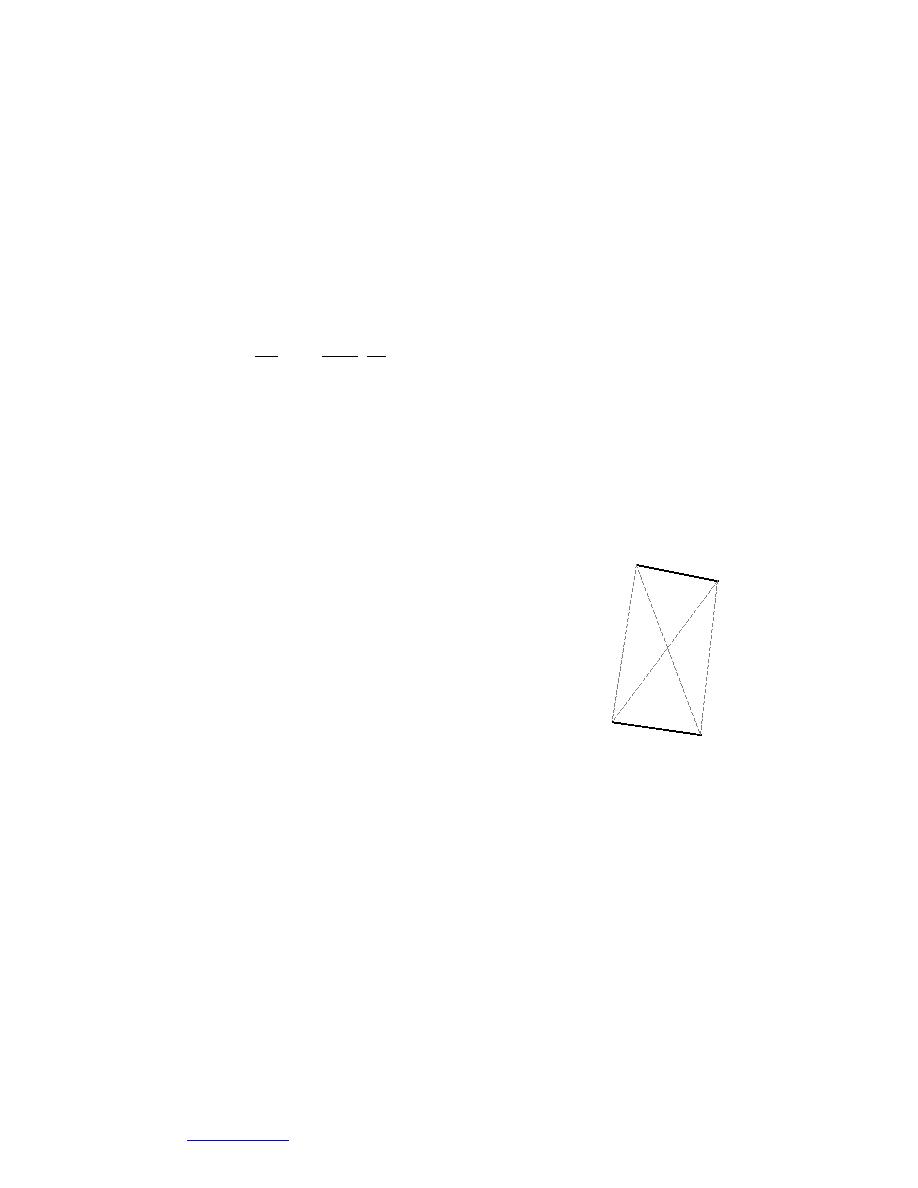
The material properties of the fluid (air) can be held constant or reevaluated
between iterations using an average temperature obtained using a number of
schemes. FECOME averages the temperatures of the zero velocity nodes (the
inside surfaces of the enclosure) and calculates new air properties based on this
average temperature between each iteration.
Radiation
Large temperature differences can sometimes exist between utilidor steam lines
and the utilidor walls. Temperature differences between surfaces cause heat flow
via radiation in addition to natural convection. The heat flow due to radiation
(radiosity) between surfaces is described by this equation:
1 - ε j Qj
δ kj
(
)
n
n
∑
= ∑ Fk - j σ Tk4 - Tj4
- Fk - j
(113)
j =1 ε j
ε j aj j =1
where σ = Boltzmann's constant,
T = absolute temperature of surface k or j,
Fkj = viewfactor of surface k to j,
Qj = radiation heat flux into or out of surface j,
aj = area of surface j,
δkj = 1 if k = j, and = 0 if k ≠ j.
The calculation of the radiation heat flux requires the cal-
a
1
b
culation of the radiation viewfactors between each radia-
tion surface. There are a number of procedures to make
5
these calculations (Siegel and Howell 1992). Emery et al.
(1991) made accuracy comparisons between several numeri-
2
4
cal approaches. However, none of the procedures are trivial
for complex geometries. For the two-dimensional analysis
of utilidors, the surfaces should be considered infinite in
3
depth. By using the finite element boundaries as the edges
c
of infinite strips, a special case of two-dimensional geom-
6
d
etry is obtained.
Figure 10. Viewfactor
A relatively simple method can be used to obtain the
analysis of F16.
viewfactors for the case of infinite strips; known as Hottel's
crossed-string method (Siegel and Howell 1992), the procedure is developed as
follows. To obtain the viewfactor between surfaces 1 and 6 in Figure 10, first form
the triangle abc with the infinite strips 1, 2, and 3. The viewfactors between these
three surfaces can be written as
F1- 2 + F1- 3 = 1
(114)
F2-1 + F2- 3 = 1
(115)
F3-1 + F3- 2 = 1 .
(116)
Multiply each equation by the area of its surface:
a1F1- 2 + a1F1- 3 = a1
(117)
a2 F2-1 + a2 F2- 3 = a2
(118)
20
Go to Contents



 Previous Page
Previous Page
